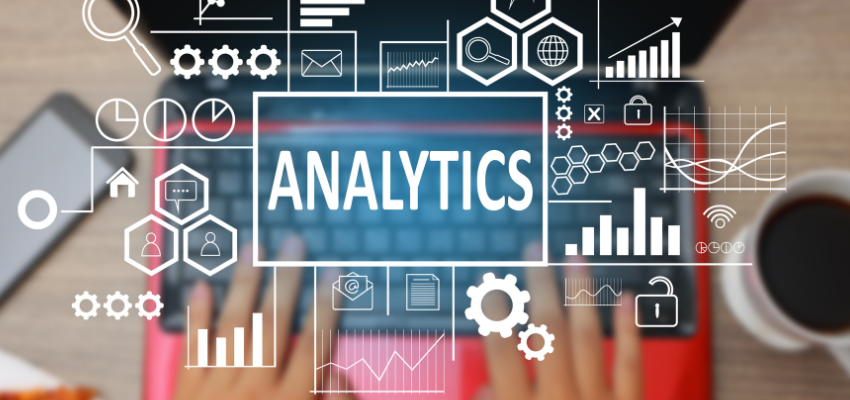
In the age of big data, organizations grapple with vast, intricate datasets. Extracting meaningful insights from this complexity requires more than basic reporting; it demands sophisticated techniques and specialized expertise. This is where advanced analytics consulting plays a pivotal role—helping businesses convert complex data into clear, actionable insights that drive efficiency, innovation, and competitive advantage.
Here, we delves into the technical aspects of advanced analytics consulting, exploring how it helps organizations transform complex data into clear, actionable insights.
The Role of Advanced Analytics Consulting
Advanced analytics consulting focuses on employing cutting-edge techniques such as machine learning, artificial intelligence (AI), predictive modeling, and big data analytics to solve complex business challenges. Businesses that incorporate advanced analytics into their workflows can:
- Improve decision-making with data-driven insights
- Enhance operational efficiency through predictive maintenance
- Detect anomalies and mitigate risks proactively
- Personalize customer experiences through behavioral analysis
- Optimize supply chain logistics and inventory management
Consulting firms offering data analytics consulting services specialize in building customized analytics solutions tailored to specific business needs. These services encompass data strategy, model development, data engineering, and visualization.
Key Components of Advanced Analytics Consulting
1. Data Engineering and Management
Before analysis, data must be collected, cleaned, and structured. Advanced analytics consulting begins with robust data engineering, which involves:
- Data ingestion from multiple sources (IoT devices, CRM systems, ERP platforms, social media, etc.)
- Data cleansing and transformation to remove inconsistencies
- Creating scalable data pipelines for real-time and batch processing
- Implementing secure data storage solutions such as data lakes and warehouses
2. Exploratory Data Analysis (EDA)
EDA helps uncover trends, correlations, and patterns within datasets. Using statistical techniques and visualization tools like Power BI, Tableau, and Python libraries (Pandas, Seaborn, and Matplotlib), consultants identify:
- Missing values and outliers
- Key performance indicators (KPIs) affecting business outcomes
- Initial hypotheses for predictive modeling
3. Predictive and Prescriptive Analytics
One of the core advantages of data analytics consulting services is predictive modeling, which enables businesses to anticipate future trends based on historical data. Common techniques include:
- Regression analysis for demand forecasting
- Time-series modeling for financial projections
- Machine learning classification models for customer segmentation
Prescriptive analytics takes predictions a step further by suggesting optimal actions based on the insights derived. Techniques such as reinforcement learning and optimization algorithms guide decision-makers in areas like pricing strategy, fraud detection, and resource allocation.
4. AI-Driven Automation and Machine Learning
Machine learning models can automate data analysis, enabling businesses to process vast datasets with minimal human intervention. Advanced analytics consulting leverages AI-driven automation for:
- Chatbots and virtual assistants for customer support
- Sentiment analysis in marketing campaigns
- Image and video recognition for security applications
- Fraud detection in financial transactions
5. Data Visualization and Reporting
Clear insights require intuitive visualization. Consulting services use dashboards and reports to present findings in an easily interpretable format. Popular tools include:
- Power BI and Tableau for interactive dashboards
- Google Data Studio for real-time reporting
- Python (Plotly, Seaborn) for custom visual analytics
Effective visualization bridges the gap between technical data scientists and business stakeholders, ensuring insights lead to informed decisions.
Implementing Advanced Analytics: A Step-by-Step Approach
The implementation of advanced analytics requires a structured approach to ensure successful outcomes. Here are the essential steps involved:
Step 1: Define Objectives:
The first step is to clearly define the objectives of the analytics initiative. What business challenges are being addressed? What insights are being sought? This transparency will steer the entire process.
Step 2: Data Collection and Preparation
Once objectives are established, organizations must collect relevant data. This may involve integrating data from various sources, including databases, CRM systems, and external datasets. Data preparation is crucial, as it ensures that the information is clean, consistent, and ready for analysis.
Step 3: Choose the Right Analytical Techniques
Depending on the objectives, consultants will select appropriate analytical techniques. Whether it’s machine learning for predictive modeling or clustering algorithms for customer segmentation, the choice of method is critical for deriving meaningful insights.
Step 4: Analyze and Interpret Data
With the data prepared and techniques chosen, the analysis phase begins. This involves running algorithms, visualizing data, and interpreting the results. Collaboration between data scientists and business stakeholders is essential to ensure that the insights generated are actionable and relevant.
Step 5: Implementation and Monitoring
Finally, organizations must implement the insights gained from the analysis into their decision-making processes. This may include adjusting marketing strategies, improving operational procedures, or enhancing customer interactions. Continuous monitoring is required to evaluate the effectiveness of these changes and to make necessary adjustments.
In summary, advanced analytics consulting serves as a powerful tool for organizations looking to transform complex data into clear insights. By leveraging predictive analytics, customer segmentation, and operational efficiency strategies, businesses can navigate the complexities of today’s data landscape.
For more information on how to leverage advanced analytics for your organization, consider engaging with Priorise which specializes in this domain.
-
Previous Post
Staff Augmentation: A Solution to IT Skill Gaps
Post a comment Cancel reply
Related Posts
The Importance of Data Analytics in Digital Advertising Agency Services
What if your next viral ad campaign wasn’t driven by guesswork, but by data? In…
Data Strategy Explained: Why AI Is Key to Success and Scalability
In a world where data is generated at breakneck speed—from customer interactions and IoT devices…
How Big Data and AI Are Reshaping the Media Industry
Discover how media companies like Netflix use big data and AI to drive viewer engagement,…
Designing Effective GenAI Agents: Best Practices, Pitfalls, and Strategies
In early 2025, leading enterprises have showcased the transformative potential of Generative AI (GenAI) in…








